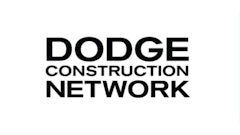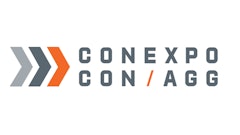
AI-driven automation is becoming increasingly integrated into the world of software development: documentation generation, coding assistants, automated testing, and deployment orchestration, among others. This has extended to all industries and Construction is not an exception.
These capabilities promise to shorten project timelines, cut down on costly rework and free up crews and managers to focus on higher-value tasks like safety, quality and strategic planning. But there’s a reality that can’t be ignored: many construction projects are already in motion when new digital tools are introduced. Schedules are tight, budgets are committed and any disruption can have cascading effects.
This is where the real challenge lies. AI automation has the potential to accelerate decision-making, reduce rework and improve project outcomes. Yet if it’s implemented without care, it can generate friction instead of efficiency. The goal is not to “transform everything at once,” but to integrate AI in ways that reinforce productivity rather than stall it.
This article delves into three critical focus areas for construction technology teams and decision-makers: integrating AI automation, applying agile methodologies within construction tech environments and avoiding common pitfalls when scaling digital tools.
Introducing AI Without Slowing Live Projects
One of the industry’s biggest concerns is that adopting AI will create interruptions: downtime during rollout, confusion among teams or added workload while systems are adjusted. And there’s another layer to consider — many AI features are still evolving. They deliver useful recommendations but still require validation and interpretation. This fact changes the nature of risk — it’s no longer just a technical integration issue, but an operational risk tied to team trust and project continuity.
A key point to remember is that in critical areas (such as real-time monitoring of site safety, automated change order recommendations or adjustments to project schedules,) human oversight is not a luxury — it’s a necessity. And when large volumes of AI-generated content are involved, the cost of that supervision rises quickly and must be part of the feasibility analysis.
That’s why the most effective approach is gradual. Instead of deploying AI across an entire platform, successful rollouts start with pilots in low-risk areas.
Rather than offering a strict formula, it’s worth considering a series of practical guidelines:
Assess the sensitivity of each component: which parts of the pipeline can tolerate automated recommendations, and which cannot. E.g., AI can prioritize safety alerts, but final approvals for shutdowns must remain human.
Clearly define what constitutes an “approvable output” versus what requires manual verification.
Anticipate what happens in the event of a major failure. Preparing contingency plans — such as rollback procedures for schedule changes, flagging AI-generated documentation as drafts, and ensuring field teams have direct reporting channels for errors.
In practice, this translates into tangible scenarios: automatically generating build and release documentation, assisting with job sequencing for parallel testing, or prioritizing alerts in monitoring — always with a human validation step in the process.
Tracking impact is also key. Metrics like review time, false positive rates and savings achieved through automation help determine when a feature is ready to scale. When AI is introduced in measured phases — supported by contingency plans and reversible deployment — it strengthens operations rather than disrupts them.
In short, the reality shows that implementing AI in automation requires both technical and operational caution — not to discourage its use, but to ensure that its adoption doesn’t become a source of friction and instead acts as a true productivity multiplier.
Applying Agile Thinking to Construction Tech
Agile principles — iteration, frequent delivery, feedback loops and cross-functional teams — can be reimagined for automation environments in software development. Embrace the logic of controlled experimentation: short sprints to test AI integrations, minimal and reversible deliveries, and feedback cycles that actively involve those who operate the pipelines daily.
Cross-functional collaboration is particularly valuable: pipeline integrators, QA engineers, SREs and data specialists should be involved from the experiment’s design phase to avoid solutions that “work in the lab” but fail in production. Common agile tools in automation — such as feature flags, canary releases, A/B testing in controlled environments and rich telemetry — make it possible to measure real-world impact without exposing critical components to sudden changes.
To maintain agility while scaling quickly, teams can rely on a few key practices:
Structured Onboarding: Every new engineer joining a project should undergo focused onboarding sessions to learn the construction domain, product architecture and specific client needs. As the team reviews documentation, it's important to not only verify accuracy but also update it to keep knowledge current and enhance speed-to-contribution for future team members.
Mob Sessions: Teams should regularly hold collaborative coding sessions where an expert guides the group through real tasks such as refining ML models for predictive scheduling or debugging automation for safety reporting. Control rotates among participants, accelerating knowledge transfer and ensuring high-quality implementations.
Short, Iterative Sprints: Having weekly cycles delivers small, testable features — like anomaly detection models or resource-allocation recommendations — that can be validated immediately by field teams. Construction managers should provide direct feedback, ensuring that solutions align with real project conditions.
Agile also encourages evidence-based progression. Instead of aiming for a sweeping launch, each iteration delivers a small, testable outcome. Techniques like sandbox environments, feature flags or controlled releases allow teams to measure effectiveness before exposing critical workflows to automation.
Ultimately, agile practices make AI adoption more manageable. The focus shifts from “deploying new tech” to “building confidence step by step” — a far better fit for an industry where operational continuity is non-negotiable.
Avoiding the Biggest Pitfalls When Scaling AI Tools
Once AI features move beyond initial pilots, new challenges tend to emerge. The most common is a lack of user confidence. If teams don’t understand how to interpret recommendations — or when human judgment should take precedence — adoption slows down. Practical training grounded in real use cases is far more effective than technical documentation alone.
Data is another frequent barrier. AI models depend on accurate and consistent inputs. When information from cost histories, project schedules or risk models is fragmented or incomplete, the quality of AI outputs suffers. Aligning data sources and validating integrity before scaling is essential.
With generative models applied to technical documentation or configuration suggestions, there’s a particular risk of hallucinations — outputs that appear plausible but are actually incorrect. If treated as truth, these errors can cascade through the system.
To mitigate this, it’s essential to set boundaries: implement confidence thresholds, use flags to label outputs as “suggestions” rather than automatically applied changes and require human validation at sensitive steps (such as rollbacks, infrastructure changes or permission adjustments). Before training or fine-tuning models, it’s also advisable to audit the source and quality of the data — inconsistent or biased data often leads to unpredictable behavior.
There’s also the risk of implementing AI without a clear goal. If automation isn’t tied to measurable improvements — like reducing manual review work or improving planning accuracy — it becomes harder to justify its expansion.
Relying on specialized AI teams for periodic audits and creating hands-on training materials (such as real-world examples and verification playbooks) can significantly reduce operational risks and increase the likelihood that automation becomes a true productivity multiplier rather than a source of friction.
Takeaways
AI automation is already transforming construction technology. Its value is real — but it only materializes when implementation respects the pace and pressure of active projects.
This encourages teams to maintain realistic expectations, focus on measurable outcomes instead of hype and recognize that even the most advanced models remain tools that require human judgment and oversight. This mindset also reframes automation as an evolving partnership between humans and machines, where the goal isn’t to replace expertise but to amplify it.
To get better outcomes:
Break adoption into controlled experiments: Start small with reversible, low-risk pilots that generate actionable insights.
Involve operational teams from day one: The people who manage pipelines daily should guide design decisions and validation processes.
Set clear boundaries and verification processes: Define where automation can act autonomously, where human review is essential, and how to respond when things go wrong.
Maintain explicit data governance: Continuously audit data sources, quality and usage to ensure reliability and reduce the risk of model drift or bias.
Seen this way, AI isn’t a disruption — it’s an accelerator. By introducing automation gradually, with clear guardrails and operational awareness, it enhances planning speed, reduces rework and improves risk visibility without slowing down the work that’s already underway.
Construction doesn’t pause for technology. Companies that will benefit most from AI are the ones integrating it as an ally to existing workflows — not as a replacement for them.



















